The official state bird of Minnesota is the common loon (Gavia immer). The state legislature adopted this bird as an official state symbol on March 13, 1961. Minnesota hosts the largest common loon population in the lower 48 states — only Alaska has more! Read on to find out more about where they live and how to identify them.
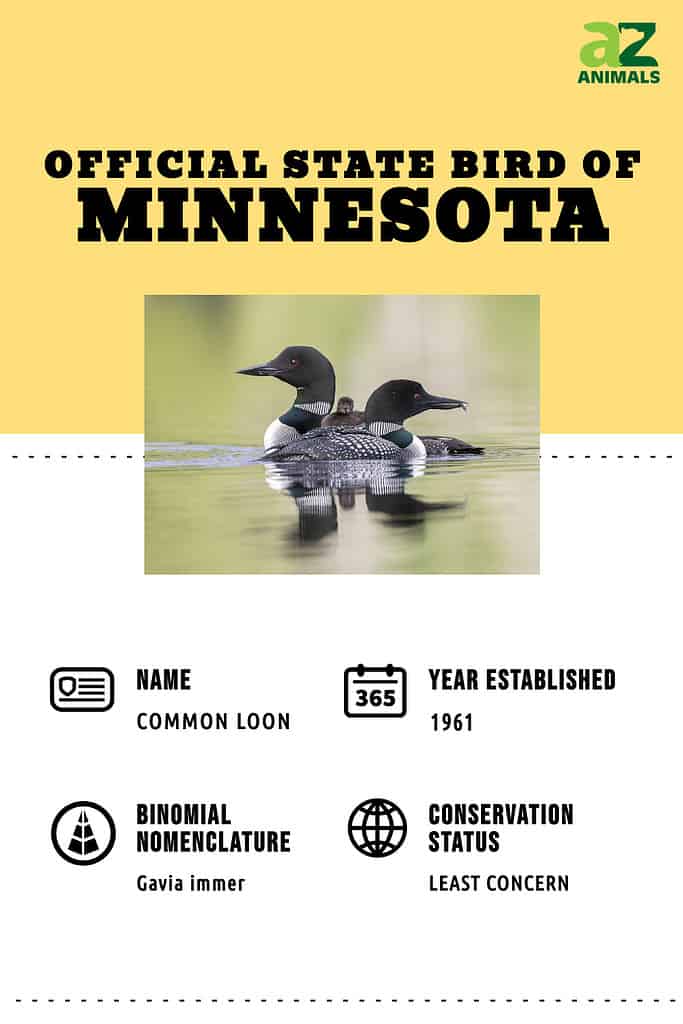
What Do Common Loons Look and Sound Like?

Common loon
parents sport matching black-and-white plumage during the breeding season, while chicks are born a downy chocolate brown.
©Brian Lasenby/Shutterstock.com
Common loons are large diving waterbirds. Length ranges from 26.0-35.8 in (66-91 cm), with a wingspan measuring 40.9-51.6 in (104-131 cm). Weight averages 88.2-215.2 oz (2500-6100 g). Males are generally larger and heavier, but otherwise, both sexes look identical.
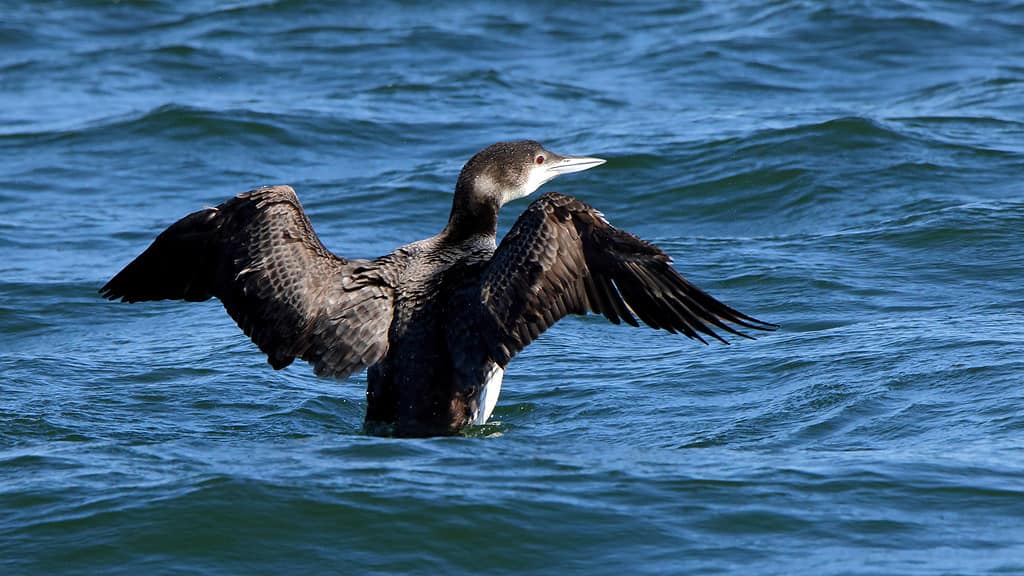
While Minnesotans may see common loons in transitional plumage early and late in the breeding season, their full non-breeding plumage is generally only seen in their winter homes.
©John_Wijsman/iStock via Getty Images
Adult common loons have distinct breeding and non-breeding plumages. Breeding adult plumage includes a black head and neck with an iridescent sheen, black bill, black-and-white striped collars, and black-and-white checkerboard back, along with blood-red eyes. Nonbreeding adult plumage fades to a brownish color with a white throat. The bill also fades to gray, and the eyes are duller red.
Common loons are just as well-known for their eerie sounds as they are for their tuxedo feathers. Their four main calls are known as tremolos, yodels, wails, and hoots. The tremolo is an alarm call; the yodel is the male’s territorial call; the wail is a location communication call; and the hoot is a family call.
What Do Common Loon Nests and Eggs Look Like?
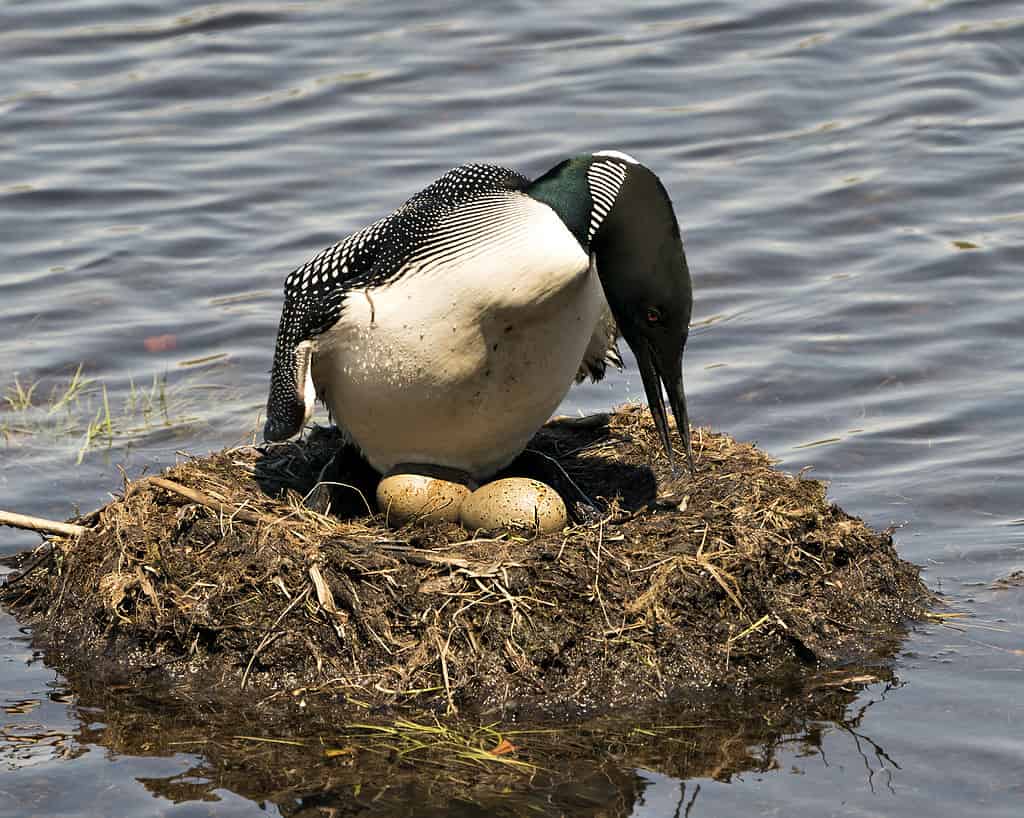
Common loons prefer nesting on lake islands or bog islets when available.
©Rejean Bedard/iStock via Getty Images
Male and female common loons work together to build their nest in May. They construct a mound nest using dead vegetation such as marsh grasses and sedges, building along lake banks as well as on artificial platforms provided by humans. For the finishing touch, one parent climbs on top of the mound to mold the nest’s interior into the shape of its body. Once the nest is completed, the female then lays 1 or 2 eggs. These eggs are brown with dark splotches and are incubated for 26-29 days. If nesting is successful, loon pairs will often rebuild on the same site the following year.
What Do Common Loons Eat?
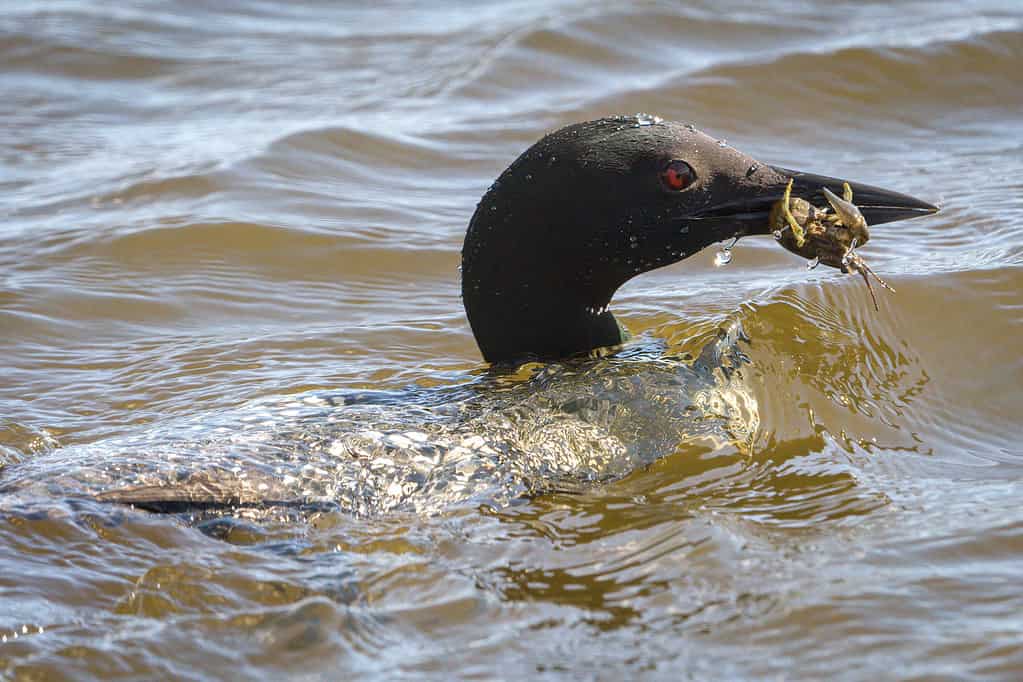
While the majority of a common loon’s diet consists of fish, they also enjoy crunching on crustacean snacks.
©Brian Reinke/iStock via Getty Images
Common loons are primarily piscivores and use their dagger-like bills to catch a variety of small fish. They will, however, also feed on other aquatic creatures, including crustaceans, mollusks, insects, and amphibians. They also occasionally eat aquatic vegetation.
Where Do Common Loons Live?
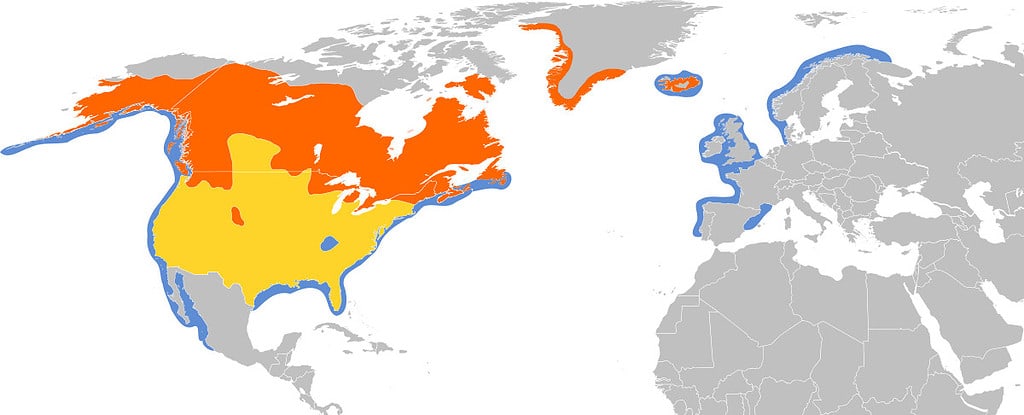
Common loons spend the winter in coastal areas of both North America and Western Europe. (Map key: orange = breeding range, yellow = migration range, blue = non-breeding/winter range)
©Jebbles / CC0 via Wikimedia Commons – License
Common loons are a migratory bird species. They breed on large wooded lakes across Canada, Alaska, and parts of the northern United States, as well as Greenland and Iceland. During migration season, they can be seen moving across most of the lower 48 states. They make their winter homes along both the Atlantic and Pacific coasts of North America, including the Gulf of Mexico and the Gulf of California, as well as along the Atlantic coast of Western Europe, including the Norwegian Sea, North Sea, Celtic Sea, and south to the Bay of Biscay and the western Mediterranean. Iceland hosts a small population of common loons year-round.
Where and When Can You See Common Loons in Minnesota?
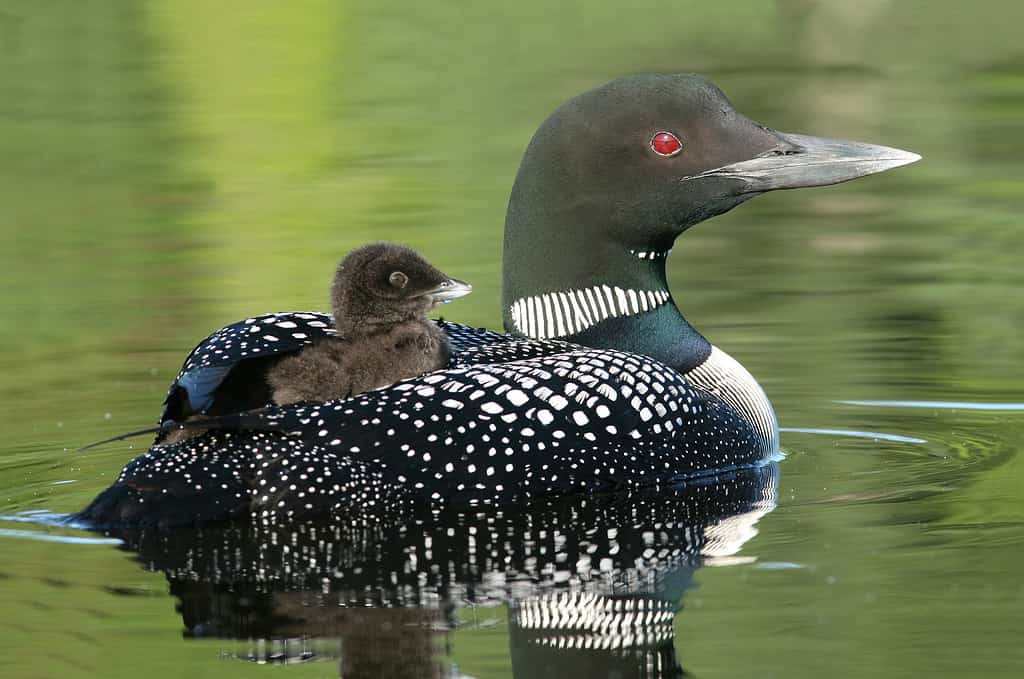
Common loon chicks can often be seen hitching a ride on a parent’s back!
©BRIAN LASENBY/iStock via Getty Images
Northeastern and central Minnesota falls within the common loon’s breeding range, and the state hosts about 12,000 loons annually. Common loons typically begin arriving in Minnesota from the overwintering grounds in late March to early April. The state’s numerous large, clear lakes provide these birds with the perfect summer homes for nesting and raising their young. Adult loons will begin migrating to their winter homes in September, with the young loons following about a month later.
Conclusion

A beloved state bird, the common loon also appears on Minnesota’s official 2005 state commemorative quarter.
©U.S. Mint / CC0 via Wikimedia Commons – License
This large diving waterbird was officially declared a state symbol in 1961 and also appears on the state’s official commemorative state quarter from 2005. Minnesota hosts the largest population of these migratory waterbirds in the lower 48 states, with about 12,000 arriving every spring to make the state their home for the summer breeding season. With their dashing tuxedo plumage and beautiful, haunting calls, these breeding-season loons are an unmistakable sight and sound across Minnesota’s famous system of lakes.
The photo featured at the top of this post is © SteveOehlenschlager/iStock via Getty Images
Thank you for reading! Have some feedback for us? Contact the AZ Animals editorial team.







